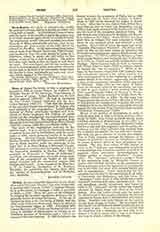

Cross-Bearer, the cleric or minister who carries the processional cross, that is, a crucifix provided with a long staff or handle. An archbishop’s cross is borne with the figure of the crucifix towards the prelate, but in all other cases the figure should be turned forward. The cross-bearer should, whenever possible, be a cleric (Council of Milan, seventeenth century), but in lay processions the most worthy of the laity should be selected for the office. In the more solemn processions such as those of the Blessed Sacrament, Palm Sunday, and Candlemas Day, the cross should be borne by a subdeacon vested in amice, alb, and tunic; on less solemn occasions by a clerk in surplice. The staff is held with both hands so that the figure is well above the head. The cross-bearer and the two acolytes by whom he is accompanied on the more solemn occasions should walk at the head of the procession, except when the thurifer is there, and should not make any reverence whilst engaged in this function.
PATRICK MORRISROE

